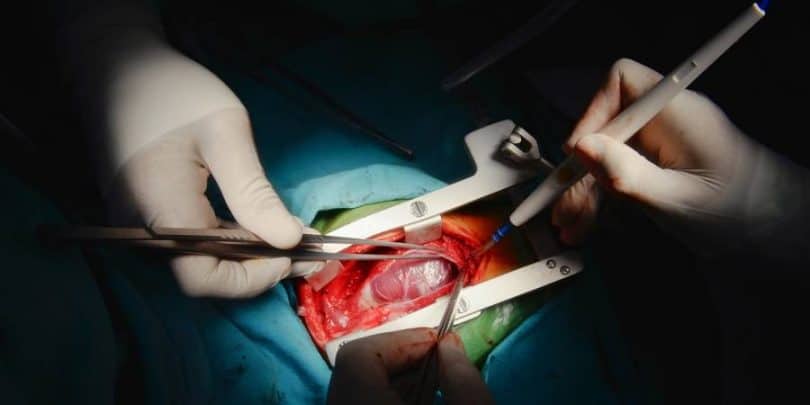Previous heart pumps are often bulky and have disadvantages. A robot made of soft material should now gently imitate the natural function of the heart.
Real cyborgs do not have much in common with those who invented science fiction. Doctors do not replace the boring, old legs with super-strong robo-legs and they do not put cameras in the eye to compensate for their weaknesses. But: They save lives by letting a robot to their hearts.
In the journal Science Robotics, scientists have presented a novel device that makes a heart beat: It covers the organ and sits with a probe on the wall, which separates the two lower heart chambers from each other. The robot can also control each chamber individually. This would allow hearts to function again without having to be transplanted. There is another new robotic heart that also lays around the organ like a cuff, but this can not drive the chambers individually.
Currently, patients need to rely on a device called a ventricular assist system that pumps blood through the body. The device sits partially outside the body and takes over the function of the left or right ventricle. The problem with this is that patients have to take blood thinners so that they do not clog the lines of the device. And doctors do not like to prescribe blood thinners if they can prevent it.
Gentle compressed air
By contrast, the new robot is right at the heart and only activates its original function. It is made of soft polymers so that it better fits the organ and does not irritate the tissue. But it is also gentle in design: Instead of conventional engines, which are complicated and bulky, it works pneumatically, so with compressed air, which is a much gentler way to animate the heart.
The second component is a rod that sits right in the heart. More precisely in the ventricular septum, the interventricular septum. A needle pierces the septum and opens a shaft through which an anchor is led to the other side – something like a closed umbrella. Then a disc is screwed to the end, which completes the anchor.
On the outside so sits the inflatable shell, which presses against the heart wall. The shaft, in turn, pulls the septum toward the wall, thus initiating the pumping mechanism of the chamber. If the robot did not move the septum, he could not really imitate the heartbeat. “The septum is actively involved in the contraction of the heart chambers,” says Nikolay Vasilyev, a scientist at the Cardiac Surgery Department at the Boston Children’s Hospital. “When the heart contracts, not only the outer walls move. Meanwhile, the septum expands and moves inward towards each chamber. ”
By compressing the outer components using soft-robotics and pulling the rod on the septum, the device can pump blood much more accurately than other implants. The system responds either to the electrical signals from the heart or pressure changes within the chambers to tune the contractions to the natural function of the heart.
The researchers have already tested the implant on a live pig. The next step could be to implant the robot in a live animal and observe it for months.
“As far as technical development is concerned, we are almost at the point where a large company or multiple investors take the technology to the next level and develop a finished product,” says robot engineer Pietro Valdastri of the University of Leeds, who participated in the study is. “I hope it comes to that. The technology is in my opinion ready for the next jump. “Robots have conquered our hearts. Now they also ensure that they continue to beat.







